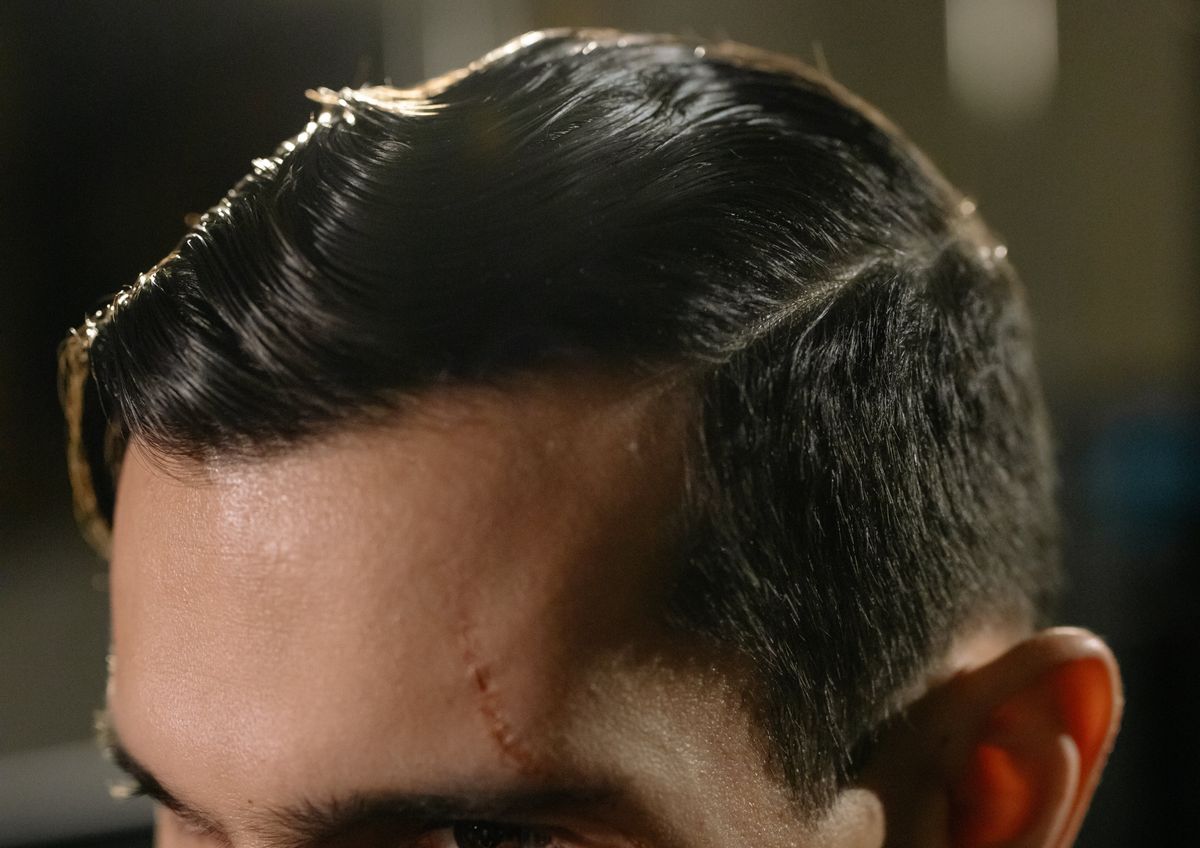Scar treatment can address specific concerns about the appearance of a scar on your face and/or neck. There are four general categories of treatments for scars, each of which may or may not benefit you. Seek a fellowship-trained facial plastic surgeon to help determine whether - and which - scar treatment is appropriate for your concerns.

Scar Treatment: An Explainer
Dr. Jeffrey Harmon
Topical Treatments Can Improve Healing and Reduce the Risk of Abnormal Scarring
The enemy of surgical incision healing is sun-exposed, dry skin. To that end, topical treatments that keep surgical incisions moist and protected from the sun can improve healing and reduce the risk of abnormal scarring. The first few days after surgery require a topical antibiotic to both keep incisions moist and to reduce the risk of infection. Next, an occlusive moisturize such as Aquaphor© is used to continue to hold moisture in the skin around the incision. Finally, a silicone-based scar gel layered over with a mineral-based sunscreen with an SPF of 30 or greater is applied for months until the incision is completely healed.
Injectable Treatments Can Reduce the Risk of Abnormal Scarring and Improve the Appearance of Scars
Incisions can (rarely) scar excessively, resulting in discoloration and contour abnormalities. Careful use of dilute steroids injected into these scars starting a few weeks after surgery can soften them and improve their contour, making them flatter and more even. Fluorouracil is a medication that has been used early in the healing process after eyelid surgery (blepharoplasty) to reduce excessive scarring which can result in incomplete eye closure, called lagophthalmos. It is injected deep into scars just as they are starting to form.
Resurfacing Treatments Can Improve the Color and Contour of Scars
Resurfacing lasers, including the Erbium:YAG and CO2, are potentially excellent tools for treating excessive scarring. Similarly, chemical peels which also resurface the skin can be used to treat excessive scarring. Both lasers and chemical peels can improve the color and contour of scars. But both do involve a recovery process during which the top layers of skin heal. Unfortunately, resurfacing lasers and chemical peels cannot be used on darker skin tones due to the risk of skin lightening associated with these treatments.
Surgical Scar Revision Can Remove Abnormal Scars
Scars that do not improve with topical, injectable, or resurfacing treatments may require surgical removal. Surgical scar revision involves the excision of the scarred skin and closure of the normal surrounding skin. The purpose of this procedure is to allow the skin another opportunity to heal with more aesthetically pleasing results. Surgical scar revision surgery can also reorient scars in ways that better camouflage them on the face.
Botulinum Toxin A (e.g., Botox©) is Used to Reduce Scarring
It was first theorized that botulinum toxin A (BoTA) could be used to reduce scarring in 2000. While the use of BoTA for this purpose is considered FDA off-label, more research is being published to suggest that it could be effective when injected either during surgery or shortly after (1, 2). The potential mechanisms of action are the following:
- Reduced tension on the incision site. Increased tension at the incision site increases the risk of excessive scarring. This is the reason why deep plane facelift surgery, including the extended deep plane facelift, reduces the risk of abnormal scarring compared with other non-deep plane techniques.
- Reduced fibroblast hyperproliferation. Fibroblasts build connective tissue and excess proliferation can result in excess scarring.
- Reduced deposition of collagen. Fibroblasts produce collagen.
Fluorouracil is Used to Reduce Scarring
Fluorouracil is another medication that is used FDA off-label to reduce scarring. It is a chemotherapeutic agent that is commonly used in dermatology to treat pre-cancerous and cancerous skin growths. It functions as an antimetabolite, which means it stops the growth of particularly fast-growing cells.
Fluorouracil is probably most used in the lower eyelid after lower eyelid surgery (blepharoplasty) to reduce the risk of and treat scarring that can lead to retraction of the lower eyelid, which can cause problems with eye closure.
Like BoTA and steroids, it is important to have a detailed discussion of the risks, benefits, and alternatives to the use of this medication with your physician prior to considering these treatments.
Trust Your Face to a Facial Plastic Surgeon
It is important to seek a fellowship-trained specialist in plastic surgery of the face and neck when you have concerns about abnormal scarring in the face and/or neck.
Request a Consultation
Request a consultation with Dr. Harmon at Harmon Facial Plastic Surgery in Cincinnati. Visit our clinic. You will learn more about Dr. Harmon’s credentials, style and approach. Build a relationship with our dedicated team. Do not stop at searching “plastic surgery near me.” Get in touch with us to learn more!
References
This blog post is for educational purposes only and does not constitute direct medical advice. It is essential that you have a consultation with a qualified medical provider prior to considering any treatment. This will allow you the opportunity to discuss any potential benefits, risks, and alternatives to the treatment.
